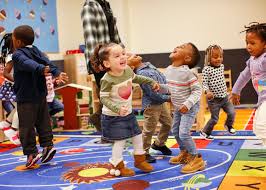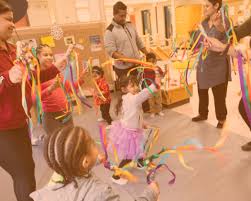Introduction and Importance in Facilitating Creativity
Movement and music are key to sparking creativity in young children. These activities help children express themselves and understand their emotions, while also improving motor skills and social interaction. Music provides opportunities for children to explore rhythm, sound, and patterns, while movement helps them develop body awareness and coordination. In early childhood education, integrating movement and music promotes cognitive and emotional development, supporting creativity in many forms. These activities lay a foundation for future learning by fostering imagination, critical thinking, and problem-solving skills (Hallam, 2021).
Creativity Theories and Perspectives
Creativity in movement and music is supported by theories such as Vygotsky’s sociocultural theory and Gardner’s Theory of Multiple Intelligences. Vygotsky highlights the importance of social interaction in fostering creativity. Through music and movement, children collaborate and learn from each other. Gardner’s theory emphasizes the role of musical and bodily-kinesthetic intelligences, showing how creativity can be expressed through these forms. These theories suggest that creativity is not just about individual expression but is shaped by social engagement and guided exploration in early learning settings (Vygotsky, 2020; Gardner, 2011).

Resources, Materials, and Digital Technologies
Educators can enhance creativity in movement and music using a mix of traditional and digital tools. Musical instruments such as tambourines, maracas, and xylophones allow children to explore sound. Movement props like scarves and ribbons help children interpret music through dance. Digital tools like Toca Band and GarageBand provide children with opportunities to create their own music and explore sound composition. Interactive platforms like GoNoodle and music-based apps also engage children in movement and rhythm exercises. These resources support a well-rounded approach to creativity, combining physical, musical, and technological learning (Miller & Almon, 2021).
Learning Experiences (One per Age Group)
0–2 years: Educator uses shakers to explore sound with infants, promoting auditory awareness and motor development (Lillard, 2020).
2–3 years: Children imitate animal movements to music, developing coordination and creative expression through dance (DeMoss, 2019).
3–5 years: Children use scarves to dance to different rhythms, helping them understand tempo and build physical coordination (Gillespie, 2021).
6–8 years: Children work together to create a group music performance, learning teamwork and creative expression through sound (Miller & Almon, 2021).
Critical Reflection and Evaluation
Reflecting on the activities, the group music performance for children aged 6–8 was a standout. Children worked well together, sharing ideas and expressing their creativity through instruments. It was a great way to build teamwork and communication skills, though some children struggled with waiting for their turn to play the instruments. To improve, I would increase the number of instruments or create a rotation system to ensure everyone has a chance to contribute.
The dance activity for toddlers (2–3 years) was effective in improving coordination and allowing them to express themselves physically. However, some children had difficulty following the rhythm. Next time, I would introduce visual cues or props to make the activity more engaging and accessible. Additionally, I would incorporate more varied music genres to keep the toddlers’ attention and encourage exploration of different types of movement.

